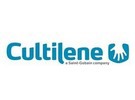Many growers have traditionally been accustomed to growing by instinct – including when it comes to determining the length of the irrigation cycle and the interval between cycles. “Most growers are guided by the weather, solar radiation, and so on,” says Remy Maat, Manager Application at Cultilene. “This results in decisions often being taken on an ad-hoc basis instead of based on a proper strategy mapped out in advance. This often works out fine, but it also means that regular adjustments need to be made to factors like the water content, EC, pH, oxygen, or temperature. But major corrections often cause extreme reactions in the plants, which can lead to problems such as blossom-end rot. That’s why systematic data-driven growing is a preferable strategy. And we are moving more and more in that direction.”
Ideal co-driver
Cultilene and Hoogendoorn are making great strides in this area as partners within the Plant Empowerment (GPE) concept. “At Hoogendoorn, we develop automation solutions for greenhouses and are particularly well known for our climate computers,” says René Beerkens, Greenhouse Consultant at Hoogendoorn. “But ‘climate computer’ is actually a misnomer: it would be better to call it a ‘growth computer’. After all, the computer controls not only the greenhouse climate but also the irrigation and, therefore, the conditions in the root zone. Hoogendoorn also supplies the hardware for monitoring this, in the form of sensors or the Aquabalance, for example. The latter is a special weighing scale that helps you tailor your irrigation exactly to the needs of the plant and the conditions in the substrate slab.”
This is also where the link with Cultilene comes in: as a specialist in substrates and irrigation, Cultilene can help growers to control their irrigation more precisely and optimize it. “With the help of Hoogendoorn’s hardware, large amounts of data can be collected about what is happening both above and below ground. The data is also displayed clearly on graphs on the climate computer,” says Maat. “The challenge is to set the right limit values for this and to make sure that you, the grower, stay within a certain bandwidth in terms of irrigation, EC, pH, and so on. With our knowledge and experience, we at Cultilene can work with you to help you set the right limits. These limit values can be entered in the Hoogendoorn climate computer and then monitored with the aid of sensors. In this way, Cultilene and Hoogendoorn reinforce each other within the Plant Empowerment concept.”
Growing by recipe
Beerkens translates the collaboration between the two companies into an apt metaphor: “You can essentially see the climate computer as a car. We at Hoogendoorn make the car, then it’s up to the grower to drive it. But it’s good to have co-drivers to guide you through certain areas. Irrigation is one of the areas that require a little extra navigation. Cultilene makes the perfect co-driver.”
Not only is Cultilene’s knowledge and experience of value in this area, but the collaboration between Cultilene and Hoogendoorn also makes a difference, Maat emphasizes. “The data and graphs that Hoogendoorn collects, combined with our expertise, are helping to achieve more and more standardization. This will eventually enable us to come up with the ideal recipe for irrigation in a crop of a particular tomato variety, for example. If you follow that recipe, you will be 90 percent of the way there. We can then work with you to fine-tune the rest.”
According to Maat, the main challenge is to change the mindset of growers. “They have to move away from growing by instinct and start doing things differently than they were used to. That’s not always easy for them, not least because instinct and data don’t always agree. It is important for growers to learn to trust the data. And rather than forcing them into it, we want to inspire them and show them that things can be done differently. On top of that, more data-driven and recipe-based growing could be an answer to the declining number of people with ‘green fingers’ in horticulture.”
Plant in balance
Of course, the key question is what can be achieved with more data-driven and recipe-based growing under the principles of Plant Empowerment. “Plant Empowerment is all about getting the plant in balance, including in terms of water. The collaboration between Cultilene and Hoogendoorn is focused mainly on optimizing the water balance. But this, in turn, also impacts on the assimilate and energy balance. All this will eventually result in a plant that is more balanced and therefore also more resilient. And that’s the ultimate goal.”
For more information:
Cultilene
cultilene.com
